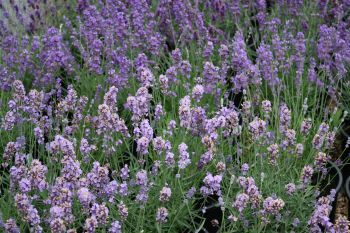Background
There is currently much public interest in helping honey bees. For example, the 2009 national resolution of the Women’s Institute was SOS for the honey bee. But how can the general public and public institutions help? One way is to make Britain more bee friendly by increasing the number of flowers that provide food (nectar and pollen) for honey bees and other pollinating insects. Urban areas are significant in terms of land use comprising 9% of UK land area (and 80% of the population). This project will determine which garden/park plants are especially attractive to honey bees. It will do this in two ways: 1) by surveying existing garden and park plants, including trees and shrubs, to quantify honey bees and other insect visitors; this project will be sub-divided into projects focusing on park and garden: a) trees, b) shrubs, c) summer-flowering herbs and flowers, d) flowering ivy; 2) by counting bees on experimental plantings to determine which are especially good (e.g., comparing varieties of lavender already grown in gardens, so that recommendations can be given as to especially good or bad varieties). In addition, the project will also carry out research to facilitate keeping hives in urban areas, such as allotments and gardens. It can be challenging for beekeepers to find urban apiary locations. The research will investigate the efficacy of hedges or lattice fences around an apiary in reducing stinging, by forcing bees to fly high, thereby reducing collisions with humans. A key aim of this research is to provide information that will allow honey bees to be kept in allotments, thereby providing urban beekeepers places to keep hives and at the same time providing pollination.
Main aims
 Varieties of Lavender
Varieties of Lavender
To determine which garden and park plants are most attractive to honey bees and other pollinating insects, with an emphasis on plants that bllom in the summer when flowers are scarcer than in spring. To obtain data that will help in setting up apiaries in towns, in such a way as to minimise nuisance to neighbours.
Current status
This project started in May 2010. The first trial of visitation rates is being set up to take place on the University of Sussex campus in summer 2010 with additional locations being prepared for summer 2011. Collaborators include Dr. Simon Charlesworth of Downderry Nursery, a specialist lavender grower, and Kew Gardens (Wakehurst Place).
Personnel
Mihail Garbuzov (doctoral student) has been hired (June 2010).
Funding
The Body Shop Foundation.
Research Update
In 2011 and 2012 LASI PhD student Mihail Garbuzov and Professor Francis Ratnieks carried out a project in Sussex on ivy and ivy flowers. Ivy blooms in the autumn. This project was published on-line in Insect Conservation & Diversity in April 2013. Although ivy flowers are small and green and not attractive to humans, they produce a lot of pollen and nectar and are very attractive to pollinating insects and attract a wide range of insect types including honey bees, other bees, hover flies, other flies, late season butterflies like the Red Admiral, and wasps. One reason why ivy is so important for pollinating insects is that it is abundant and widespread. We surveyed 20 areas, each 200m by 200m. Flowering ivy was present in 10/10 of the urban areas and 6/10 of the rural areas. At a national scale, ivy is found throughout the UK. The project showed that nearly 90% of the pollen collected by honey bees in the autumn was from ivy. It is also an important source of nectar, and 80% of the honey bee foragers we saw on ivy flowers were collecting nectar not pollen, as they did not have pollen in their baskets. More details on how to Identify Insects on Ivy


